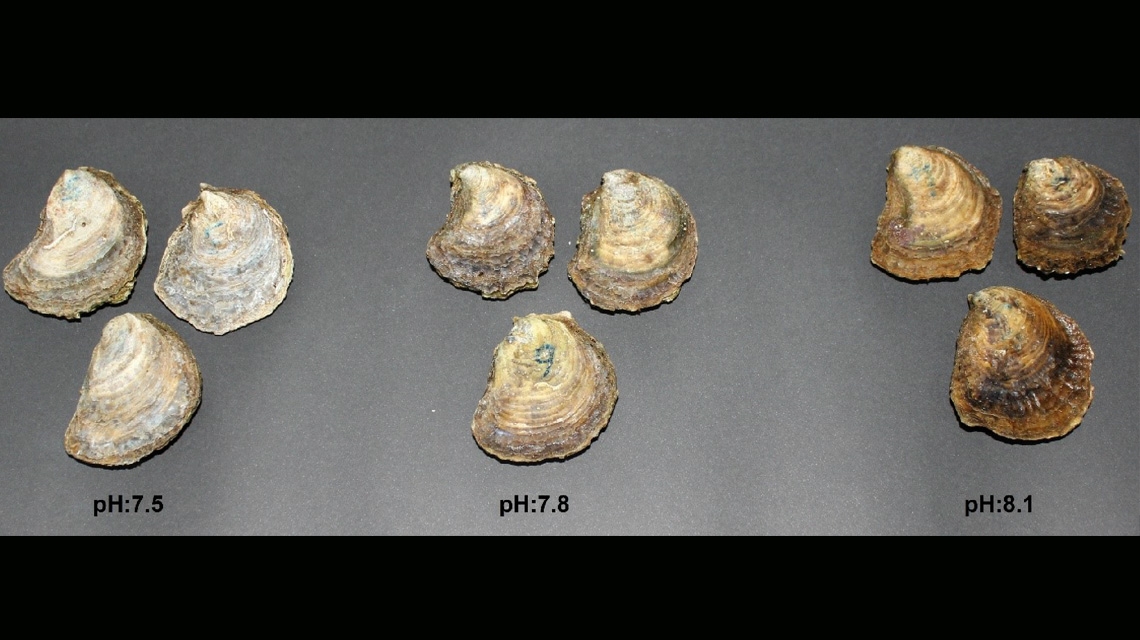Clams and other molluscs are under threat. As oceans gradually acidify due to rising carbon dioxide (CO2) emissions, some of these marine organisms will find it harder to build their shells or skeletons. This is bad news not only for the organisms themselves, but also for the people who rely on them.
The good news? Scientists can use isotopic techniques to trace the atoms in these shell-building marine animals to better understand the impact of ocean acidification and climate change, which is a first step toward countering the problem.
“As ocean acidity levels increase, some organisms take up and accumulate more radionuclides or metals than others, grow more slowly, or need more food to survive. Nuclear techniques can trace all these effects,” said Murat Belivermiş, a scientist at Istanbul University’s radioecology laboratory who is using isotopic techniques to study the effects of climate change and ocean acidification on socially and economically important seafood. Belivermiş learned how to use nuclear and isotopic techniques during a fellowship in 2013 at the IAEA’s Environment Laboratories in Monaco.
For scientists worldwide, marine organisms like clams, corals, and tiny marine snails are a window into how changing climate conditions are affecting the ocean. Increasing CO2 emissions — the propelling force behind climate change — are also accelerating ocean acidification. Oceans absorb about one-fourth of the CO2 that the world emits into the atmosphere, changing seawater chemistry and, in turn, some marine ecosystems and organisms.
Nuclear and isotopic techniques are powerful tools that scientists can use to study ocean acidification, which is sometimes referred to as the ‘other CO2 problem’. Radioactive isotopes such as calcium-45 can serve as precise tracers to examine, for instance, the growth rates of calcifying organisms (see Isotopic techniques and the effects of ocean acidification on calcifying marine organisms). These include mussels and clams that build their shells out of calcium carbonate, a naturally occurring mineral found in the ocean. Ocean acidification makes it harder for clams and mussels to find the material they need to build and maintain their calcium carbonate shells.
Using radiotracers, Belivermiş and his colleagues discovered that, when exposed to slightly acidified seawater conditions, clams absorbed twice as much cobalt than they would under balanced control conditions, while other marine organisms, such as oysters, have shown a higher level of resilience. This reveals that ocean acidification not only poses a risk to the clams themselves, but also to the people who eat them; cobalt is a heavy metal needed by the human body in minute quantities, but is toxic at elevated concentrations. This can have wider socioeconomic implications for coastal communities like those in Turkey that rely on seafood for local consumption as well as for export to European countries.
“The fishery industry, including many aquaculture growers in Turkey, rely on certain species like clams. So this kind of research could help growers adapt to the changing conditions, which in turn would also help protect the country’s fishery economy,” Belivermiş said.
Belivermiş and his colleague, Önder Kılıç, are now working to expand their collaboration with the IAEA to study the long-term effects of ocean acidification on the growth, nutritional value and health status of species used as seafood in Turkey, such as the Mediterranean mussel or mullet.
“Mussel species live for up to two years,” said Belivermiş. “In order for us to study the full life cycle of an organism, and to fully understand how it acclimates to acidified water, we need much longer experiments.”
As ocean acidity levels increase, some organisms take up and accumulate more radionuclides or metals than others, grow more slowly, or need more food to survive. Nuclear techniques can trace all these effects.






